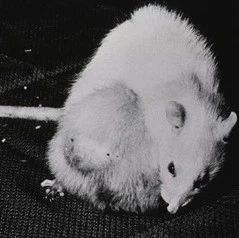胚胎是一个令人惊叹的存在:从一个初始的细胞可以发育成一个完整鲜活、会呼吸的机体,充满了功能细胞与器官。毫不奇怪,胚胎发育是一个非常精细的过程——一切都在恰当时机安排到正确的位置。发育与细胞生物学家就是以此为研究对象,揭开我们之所以成为人类的分子线索。
“在发育中最重要的步骤之一就是所有的细胞分布至三个胚层——外胚层、内胚层和中胚层,这三个胚层最后发育成了身体的各个组织与器官,”美国桑福德儿童健康研究中心的专家Mark Mercola教授解释说。
Mercola和他的团队最新发表在Genes & Development杂志上的研究发现,在发育中,microRNA在这种细胞与胚层引导的过程中发挥了重要的作用。
MicroRNA: 此之垃圾,彼之珍宝
microRNA是一小段遗传物质,与携带蛋白编码信息的mRNA类似。MicroRNA不编码蛋白质,因此,多年来科学家把基因组中编码这些短小、不具蛋白编码功能RNA的区域当做“垃圾”。
现在我们已经知道,microRNA远非垃圾,它们虽然本身并不编码蛋白质,但是却与信使RNA结合防止信使RNA编码的蛋白质形成。正是通过这种方式,microRNA在决定某个时机上哪些蛋白该表达,哪些蛋白不应该表达中发挥了重要的作用。
科学家已经逐渐认识到,microRNA是正常细胞功能以及人类疾病发展中的重要部分。因此,microRNA在胚胎发育中也发挥着重要的作用。
指挥细胞交通
为了找出在早期胚胎发育中是那些microRNA在影响胚层的形成,Mercola和他的团队分别研究了人类基因组中大约900种microRNA。他们对microRNA指导干细胞生成中胚层和内胚层的作用进行了研究。通过这些研究他们发现,两个分别被称为let-7和miR-18的microRNA家族在加强中胚层和外胚层的形成时阻止了内胚层的形成。
通过停止let-7的功能并研究随后的结果,研究人员证实了他们的发现。let-7停止发挥功能显著地改变了胚胎细胞的命运,本来应该发育为外胚层和中胚层的细胞变成了内胚层,这表明了microRNA在发育中的关键作用。
研究并未就此打住。Mercola的团队为了了解let-7和miR-18的作用方式,继续研究发现这些microRNA是通过抑制TGFβ信号途径来指导中胚层和外胚层的形成的。TGFβ是一种影响多种细胞行为——包括增殖和分化的分子。当这些microRNA改变TGFβ的活性后,细胞通过一种特定的途径一些变成了骨头,而另外一些则变成了大脑。
“我们现在已经证实microRNA是强大的胚胎细胞命运调节者,”Mercola表示。

 Whole-genome microRNA screening identifies let-7 and mir-18 as regulators of germ layer formation during early embryogenesis
Whole-genome microRNA screening identifies let-7 and mir-18 as regulators of germ layer formation during early embryogenesis
Mark Mercola et al.
Tight control over the segregation of endoderm, mesoderm, and ectoderm is essential for normal embryonic development of all species, yet how neighboring embryonic blastomeres can contribute to different germ layers has never been fully explained. We postulated that microRNAs, which fine-tune many biological processes, might modulate the response of embryonic blastomeres to growth factors and other signals that govern germ layer fate. A systematic screen of a whole-genome microRNA library revealed that the let-7 and miR-18 families increase mesoderm at the expense of endoderm in mouse embryonic stem cells. Both families are expressed in ectoderm and mesoderm, but not endoderm, as these tissues become distinct during mouse and frog embryogenesis. Blocking let-7 function in vivo dramatically affected cell fate, diverting presumptive mesoderm and ectoderm into endoderm. siRNA knockdown of computationally predicted targets followed by mutational analyses revealed that let-7 and miR-18 down-regulate Acvr1b and Smad2, respectively, to attenuate Nodal responsiveness and bias blastomeres to ectoderm and mesoderm fates. These findings suggest a crucial role for the let-7 and miR-18 families in germ layer specification and reveal a remarkable conservation of function from amphibians to mammals.







